RANGE REPORT: UBERTI .44 PERCUSSION CARBINE
For a long time I've been intrigued by the cute little .44 percussion carbine Uberti makes. It's a more or less exact copy of the Remington original, a gun that had a very short production life in the late 19th Century. Fewer than 1000 original "Remington revolving Rifles" were made between 1866 and 1879, in calibers .44 and .36.
 In essence the Revolving Rifle (left) was a New Model percussion revolver fitted with a long barrel and a permanently-attached shoulder stock. Original barrel lengths were 24" and 28" and they came in both octagon or half-octagon configuration.
In essence the Revolving Rifle (left) was a New Model percussion revolver fitted with a long barrel and a permanently-attached shoulder stock. Original barrel lengths were 24" and 28" and they came in both octagon or half-octagon configuration.
Uberti's replica is in almost all respects identical to the original Revolving Rifle, except for a shorter barrel (which measures only 18") and a rammer lever proportioned to it. The originals had a longer lever than the handguns, but this copy seems to use the same lever that Uberti puts on its New Model .44 percussion revolver.
Obviously if only 1000 were made in 13 years, the Revolving Rifle wasn't a big seller. It certainly seems from more than a century later that it ought to have been, but now that I've had a chance to play with one, I think I have better understanding of why this design didn't take the western market by storm.
I'd been looking for one of these carbines at a price I was willing to pay, without much luck. Then one Friday afternoon I went to a new local gun shop, and...lo, there on the rack was a brand new Uberti carbine, priced at only $300. That's $175 below suggested list, and $100 less than I've ever seen one offered for sale on Auction Arms...and with no shipping charges...so, of course, not being a total fool, I bought it. Two days later it went for its inaugural shoot at my club's private range.
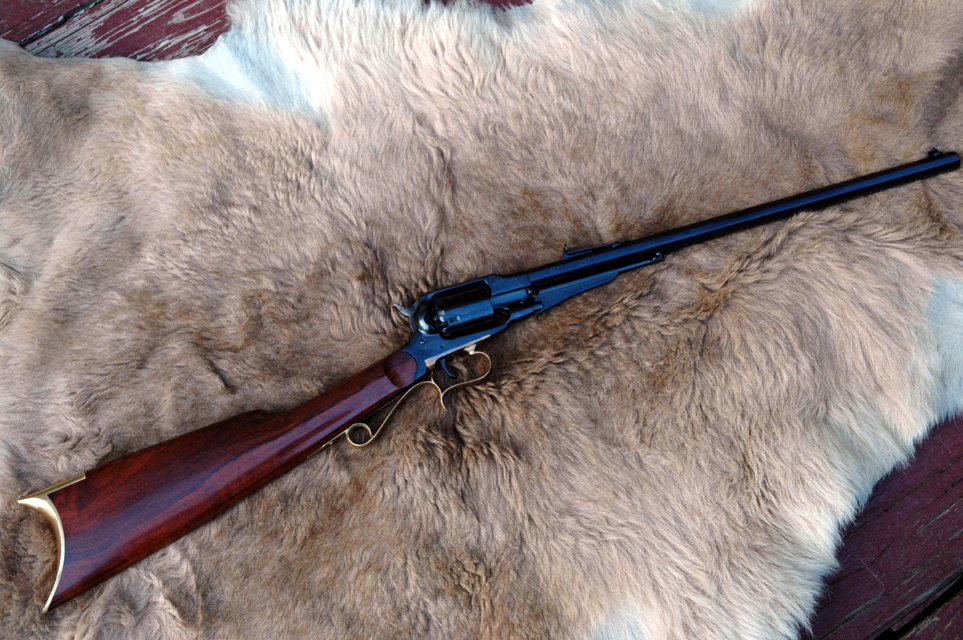
It's certainly a dainty little thing: it weighs only about 4-1/2 pounds loaded and is very nicely balanced. It carries well at the trail, and swings onto a target like a magic wand, a very naturally-pointing gun, I found. The crescent-shaped brass butt plate took a little getting used to, but once I figured out how it was supposed to feel, it snuggled up nicely into my right shoulder. It felt good, and I hoped it shot as well as it felt.
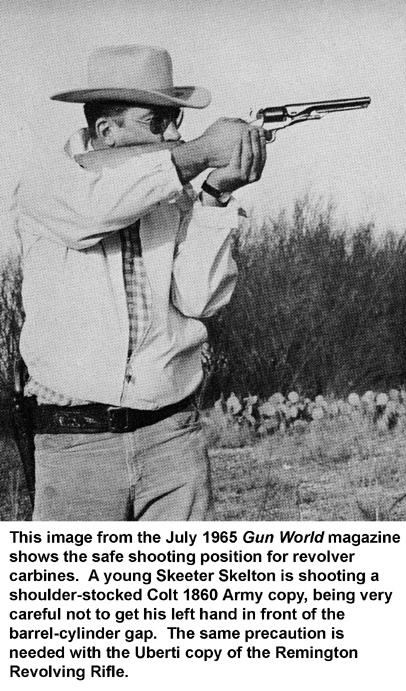 There's a trick to shooting revolver-carbines safely, and that is NOT to put your hand on the forearm, as you would with a conventional rifle. This would be dangerous enough with a gun shooting cartridges, because you'd get burned by the flash at the barrel cylinder gap: with a percussion carbine, there is always the danger of a flash-over causing a chain fire, and if THAT happened when your hand was in front of the cylinder, you'd get a bullet through your wrist. Now, in 40 years of cap and ball revolver shooting, I have never experienced a chain fire, nor have I met anyone who has. The chain fire may be a myth, or it may occur in guns that are worn beyond a certain point. But I'm not willing to take a chance, so I play the game by the rules: I use plenty of lubricant over the ball to seal the chamber, and I keep my hands clear of the front of the cylinder.
There's a trick to shooting revolver-carbines safely, and that is NOT to put your hand on the forearm, as you would with a conventional rifle. This would be dangerous enough with a gun shooting cartridges, because you'd get burned by the flash at the barrel cylinder gap: with a percussion carbine, there is always the danger of a flash-over causing a chain fire, and if THAT happened when your hand was in front of the cylinder, you'd get a bullet through your wrist. Now, in 40 years of cap and ball revolver shooting, I have never experienced a chain fire, nor have I met anyone who has. The chain fire may be a myth, or it may occur in guns that are worn beyond a certain point. But I'm not willing to take a chance, so I play the game by the rules: I use plenty of lubricant over the ball to seal the chamber, and I keep my hands clear of the front of the cylinder.
The way to safely fire a revolver carbine is to put your left hand underneath your right, and hold the gun in both hands at the same point. This position looks a little odd, but with the butt firmly anchored in your shoulder, it's actually a pretty steady hold, especially with such a light weapon.
It has open sights, a post-and-bead front sight and a semi-buckhorn rear sight adjustable for windage and elevation. Uberti calls this gun a "Target Carbine," presumably because of those sights. I suppose the name is sort of appropriate, but it depends on what you call a "target." If your target is a buffalo or an Indian's chest, and the range isn't more than 25 yards or so, you'd have a fair chance of hitting it. I was thinking it might be suitable for hunting small game, but a squirrel 25 yards away would sit there and laugh as the balls whistled past him, if today's experience is any guide: a bullseye-shooter's dream, this carbine is not.
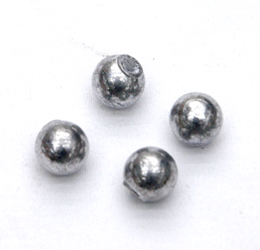
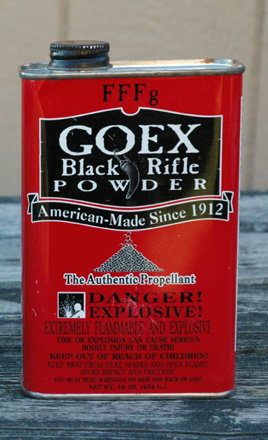 Nor is any sort of powerhouse. I started with a load of 25 grains of FFFg GOEX, a hand-cast 0.451" round ball, and a generous dollop of Thompson/Center "Bore Butter" over that, touched off by a #11 RWS percussion cap. This was a very pleasant combination, with a nice POP! to it and negligible recoil. I fired a cylinder and got a group about 3" across at 25 yards (off sandbags) that was a good 6" low. No problem, I moved the rear sight up to the middle step...and the group was STILL low with the next 6 shots.
Nor is any sort of powerhouse. I started with a load of 25 grains of FFFg GOEX, a hand-cast 0.451" round ball, and a generous dollop of Thompson/Center "Bore Butter" over that, touched off by a #11 RWS percussion cap. This was a very pleasant combination, with a nice POP! to it and negligible recoil. I fired a cylinder and got a group about 3" across at 25 yards (off sandbags) that was a good 6" low. No problem, I moved the rear sight up to the middle step...and the group was STILL low with the next 6 shots.
I had the rear sight about halfway up the elevator steps, and at first had some trouble getting it to go any higher, so I decided to jack up the powder charge to 35 grains. This is just about all the cylinder will hold and still have room for a bullet: the 1/4" gap left at the top was filled with Bore Butter. This was a decidedly more authoritative load: quite a bit more bark, more smoke, but not much more recoil. Nor did it make much difference in the point of impact, which was still a bit low.
and still have room for a bullet: the 1/4" gap left at the top was filled with Bore Butter. This was a decidedly more authoritative load: quite a bit more bark, more smoke, but not much more recoil. Nor did it make much difference in the point of impact, which was still a bit low.
Group size had opened up somewhat, so for the next go-round I dropped back to 30 grains. This load was still hitting low, pretty much at the same point as the previous two loads, so there seemed no reason not to cut back. Using 30 grains rather than 35 also leaves room for a wool over-powder wad, which adds extra lubrication and virtually eliminates the chance of a chain fire.
Eventually I did manage to figure out how to turn the rear sight elevator around and I jacked the rear sight all the way up. That still didn't work very well to raise the point of impact. Although windage was smack on, I found I had to hold a "high sight," putting the tip of the front bead at the top of the rear sight's "ears," rather than nestling it in the "U" at the bottom. Once I figured out the correct sight picture I could hit the 6" 25-yard gongs pretty consistently. With practice no doubt using this sight picture would become habitual. But I still want to work on getting it to  shoot where I expect it to, using the normal sight picture.
shoot where I expect it to, using the normal sight picture.
While this carbine is by no means a "target" gun, every shot I fired in the course of the afternoon would easily have hit a man in the chest (or in the guts) at 25 yards. Since the Revolving Rifle was intended for Indian fighting to begin with this was acceptable performance, i.e., Minute-Of-Redskin. Still, I was disappointed in not being able to hold a group much better than 3" at such short range, spoiled as I am by scopes and my other black powder rifles, with peep sights.
I have no doubt that with practice and further load development I may be able to shoot it better than I did. And...my eyes, which are about to enter their sixth decade of service, aren't all that good with open sights any more, damn it. This probably had a good deal to do with the accuracy limits I encountered. It was hard to get the front sight bead in clear focus: had there been a 26" barrel, and another 8-10" of sight radius, maybe I'd have had an easier time.
As percussion revolvers go, I found the Uberti carbine quite a bit more reliable than most: in 80 shots I had only four misfires, 3 of them due to cap fragments becoming lodged in the hammer mechanism and one to a cap that fell off. The Remington design is prone to binding up from black powder fouling, and this carbine was much better in that respect than my Pietta-made Model 1858 revolver. It did get a little sticky after 2-3 cylinders were shot off, but a drop or two of Glass Plus on the axis pin quickly restored free rotation. I swabbed the barrel after the first 18 rounds, but I'm not sure I needed to have done so. The rest of the shots were fired without bothering, and I had no problems. It did offer some considerable increase in effective accuracy at "long" ranges compared to my M1858 revolver.
Playing with this gun reinforced the lesson as to just why cartridge guns replaced percussion weapons rapidly. Loading it is a genuine pain in the ass. In general it's the same drill as loading a revolver, but the carbine is a good deal longer than any handgun and awkward to handle. You have to lay it on the bench and pick it up again for every step of the process, and you have to do that six times for a full cylinder. It would have helped a great deal to have had three hands, and four would not have been too many.
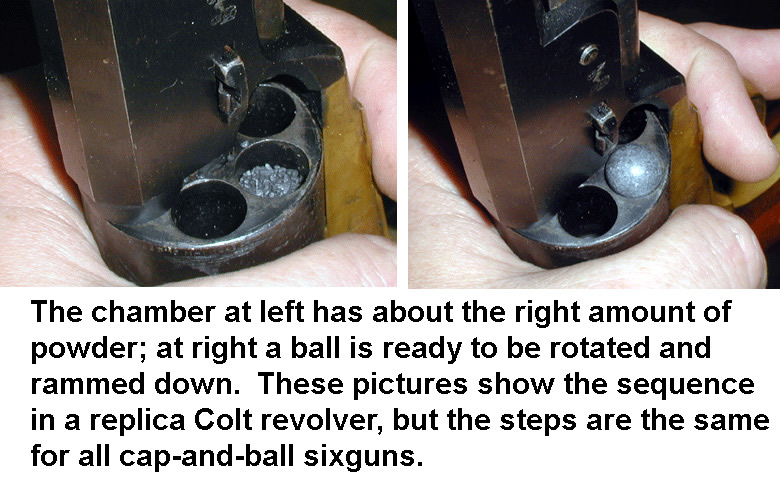
The loading sequence went as follows: 1) lay the carbine down, with the hammer at half-cock; 2) fill the powder measure from the flask; 3) pick up the carbine, and dispense the powder into the chamber; 4) set the carbine down while holding it vertical so the powder doesn't fall out; 5) pick up a ball; 6) place the ball in the chamber mouth, rotate the cylinder into position, and ram the ball home. After having repeated steps 1 through 6 six times (which involved picking it up and putting it down twelve times), then, holding the carbine in your left hand, cap the nipples.
The nipples, like those on every other C&B gun I own, are just a wee tad too small for the #11 caps. This means the caps have to be pinched to make them slightly oval shaped, or they'll fall off when the muzzle is raised. I can hear the voices now, saying, "Dummy, you should use #10 caps: they're smaller and will seat better."
Uh-uh. The #10 cap is too small for the standard size Italian-made revolver nipple. A #10 won't seat all the way down on the nipple. Using #10's instead of #11's results in first-strike misfires: the hammer's first hit 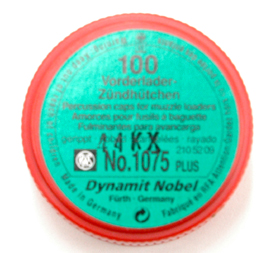 dissipates its energy by driving the cap all the way down to seat on the nipple, necessitating a second strike to make it go off. I learned this lesson long ago, and to this day I don't know what #10 caps are supposed to fit. I've never found any gun on which they worked well, not even my little pocket .31's.
dissipates its energy by driving the cap all the way down to seat on the nipple, necessitating a second strike to make it go off. I learned this lesson long ago, and to this day I don't know what #10 caps are supposed to fit. I've never found any gun on which they worked well, not even my little pocket .31's.
All C&B guns have cap preferences, caused by minute differences in dimensions in the nipples and the caps themselves: being persnickety about caps is the norm for percussion revolvers. (My Ruger Old Army will NOT fire reliably with anything except Remington caps. All other brands give first-hit misfires.) I only had RWS caps today, but there are other brands. It will take some time and experimentation to find the specific brand this gun likes best.
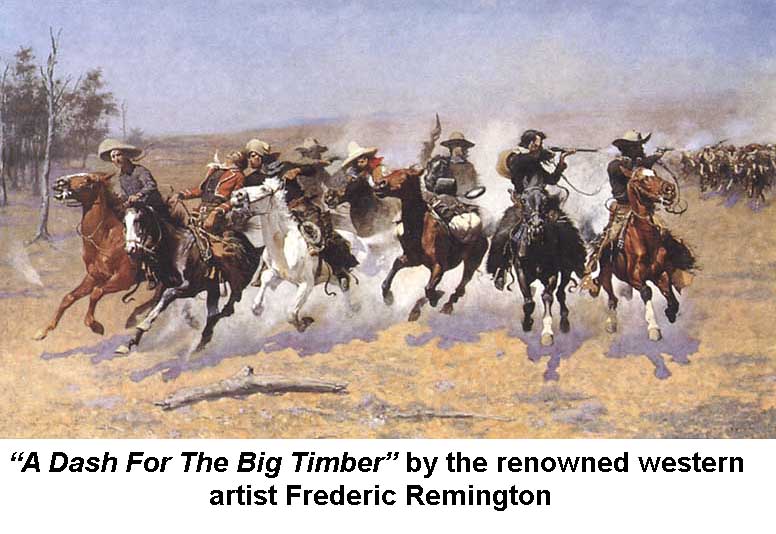
Reloading this carbine on horse-back, especially in the middle of fight, would be impossible. Not difficult, flat-out impossible. Now, I have read many times that in The Good Old Days, it was normal practice to carry a spare capped and loaded cylinder, and to swap it out for the empty one as a "speed load." Maybe this is true but I think it's a legend.
Removing and replacing the cylinder in a Remington revolver requires learning the Secret Remington Handshake, the little twists and wiggles 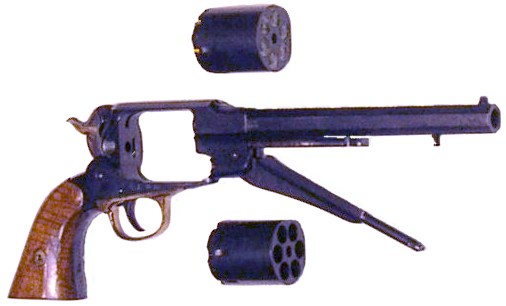 needed to do it. It's hard enough to do this while standing on the ground without dropping the cylinder. Changing out an empty cylinder (with a loaded and capped cylinder) on a horse running full speed from a band of marauding Sioux? No way, no how. It might be possible, and it even might be faster than a full reload, but before I believe that it can be done, I'd want to see someone do it. Twice. Without falling off the horse or dropping a cylinder. I would even allow him to hold the reins in his teeth. Quite aside from the general impossibility of this stunt, keeping a loaded and capped cylinder in a saddlebag or pocket is just asking for a bullet in your leg if something bangs against a cap.
needed to do it. It's hard enough to do this while standing on the ground without dropping the cylinder. Changing out an empty cylinder (with a loaded and capped cylinder) on a horse running full speed from a band of marauding Sioux? No way, no how. It might be possible, and it even might be faster than a full reload, but before I believe that it can be done, I'd want to see someone do it. Twice. Without falling off the horse or dropping a cylinder. I would even allow him to hold the reins in his teeth. Quite aside from the general impossibility of this stunt, keeping a loaded and capped cylinder in a saddlebag or pocket is just asking for a bullet in your leg if something bangs against a cap.
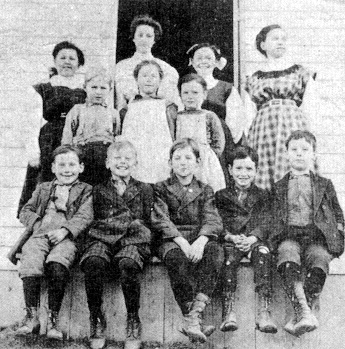 In addition to being slow to load, a Revolving Rifle would be far too delicate for really hard service. I can imagine one being used as a "buggy rifle" for some hair-oiled dandy to carry in a fancy scabbard, as means of displaying his manliness to the pretty schoolmarm he's courting, but as a tool for a hard-riding and rough-living frontiersman, it would be a dismal failure.
In addition to being slow to load, a Revolving Rifle would be far too delicate for really hard service. I can imagine one being used as a "buggy rifle" for some hair-oiled dandy to carry in a fancy scabbard, as means of displaying his manliness to the pretty schoolmarm he's courting, but as a tool for a hard-riding and rough-living frontiersman, it would be a dismal failure.
The Remington New Model revolver from which it is derived was a tough and powerful weapon, that gave fine service in the Civil War. It was quite stout enough 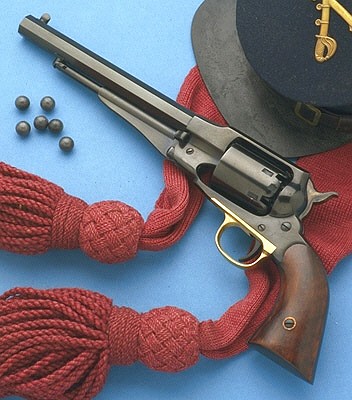 to be used as a club after it was empty, and for pistol-whipping someone in hand-to-hand combat there would be nothing finer. But the rifle or carbine version would break if you tried swinging it like a club, I'm sure. If you fell off your horse with it in your hand, you'd surely bend something beyond repair—perhaps the completely unprotected barrel—and/or crack the stock right off the fragile tang.
to be used as a club after it was empty, and for pistol-whipping someone in hand-to-hand combat there would be nothing finer. But the rifle or carbine version would break if you tried swinging it like a club, I'm sure. If you fell off your horse with it in your hand, you'd surely bend something beyond repair—perhaps the completely unprotected barrel—and/or crack the stock right off the fragile tang.
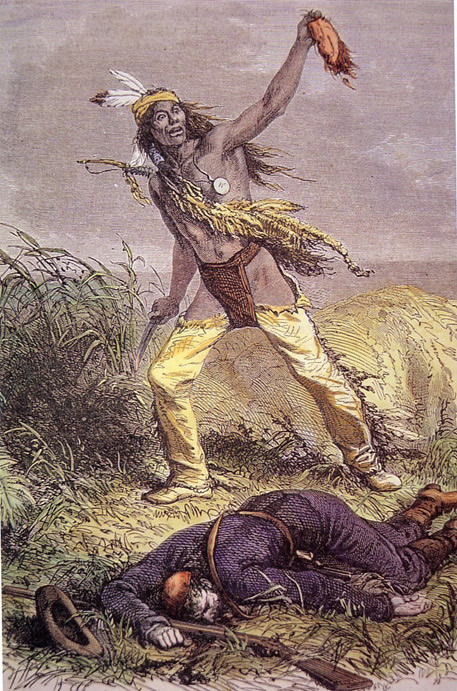 Moreover, in terms of firepower, the Revolving Rifle really offered nothing that the revolver didn't have except better long-range accuracy. A man depending on a percussion .44 to keep his hair in place would have been far better served with a second revolving handgun.
Moreover, in terms of firepower, the Revolving Rifle really offered nothing that the revolver didn't have except better long-range accuracy. A man depending on a percussion .44 to keep his hair in place would have been far better served with a second revolving handgun.
The Revolving Rifle was a commercial flop, something that in hindsight seems like it ought to have been obvious. Its arrival on the market couldn't been more poorly timed: it had to compete with the Henry rifle and the Model 1866
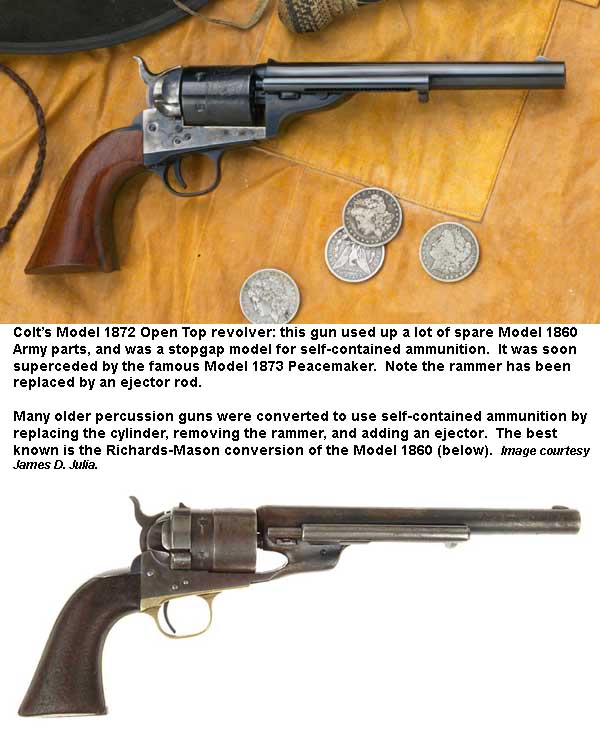 "Obsolescent" is the operative word: 1866 was pretty much the end of the era of big-bore percussion handguns. Their fate was sealed when B. Tyler Henry invented practical self-contained ammunition in the late 1850's. Smith & Wesson began selling cartridge revolvers as early as 1857, and their big bore guns came out right about the time that the Civil War was ending. For a while they enjoyed a monopoly on revolvers with cylinders bored through from the rear (the 1855 Rollin White patent) but after 1872, anyone was free to use the technology, and everyone did. Colt immediately started selling their Open Top (a modified 1860 Army with a bored-through cylinder chambered for .44 Rimfire) and offering conversions of earlier percussion guns to fixed ammunition.
"Obsolescent" is the operative word: 1866 was pretty much the end of the era of big-bore percussion handguns. Their fate was sealed when B. Tyler Henry invented practical self-contained ammunition in the late 1850's. Smith & Wesson began selling cartridge revolvers as early as 1857, and their big bore guns came out right about the time that the Civil War was ending. For a while they enjoyed a monopoly on revolvers with cylinders bored through from the rear (the 1855 Rollin White patent) but after 1872, anyone was free to use the technology, and everyone did. Colt immediately started selling their Open Top (a modified 1860 Army with a bored-through cylinder chambered for .44 Rimfire) and offering conversions of earlier percussion guns to fixed ammunition.
It's not like Remington's management didn't know what was going to happen. They had to know: by 1875 they themselves were selling their Model 1875 revolver (a design derived directly from the percussion new Army) as a direct competitor with Colt's Model 1873 Peacemaker. The Colt 1873 and Remington 1875 single actions were far and away the most popular cartridge handguns of their day, and put S&W's offering, the Schofield, off the market in a few years.
Remington, like Colt, also offered a conversion for existing percussion revolvers. Apparently owners of Revolving Rifles could get them converted to self-contained ammunition, but conversions of original Revolving Rifles are so scarce that it's obvious that only a tiny percentage of the few people who bought them were interested in the service.
In retrospect, it seems the Revolving Rifle was clearly destined to be a flop before it ever hit the market. It was a product whose time not only had passed, but in fact had never really come, a wonderful example of corporate mismanagement on Remington's part.
All that said, I'm glad I have my copy. While Remington may have goofed, Uberti didn't. This is not a rifle I'll ever hunt with, and it's damned expensive for a plinker, but it's a "fun gun" for sure. As useless as it was on the frontier, I don't expect to be fighting hostile natives any time soon, and it's a hoot to shoot. And
UPDATE, DECEMBER 6, 2012
I had this most interesting letter from Mr Dave Leiber of El Dorado, Kansas:

I just read your article on the Uberti Remington 1866 revolving carbine and agree in most part. I got mine three years ago and after working up the proper hunting load that will shoot 4-inch groups at 50 yards. I have taken a doe at 30 yards from a tree stand & a 8 point buck from a ground blind at 50 yards. 50 yards is the maximum range I would attempt to take a deer with this little rifle.
First I replaced the sights with a rear semi buckhorn w/a white diamond reference & a red fiber front sight as I'm 70 years old and like you my eyes aren't what they used to be!
I took a Dixie Gun Works .454 conical bullet mold & drilled it to take a stainless steel rod with a stop & puller I made so I could pore hollow point hunting bullets & pull the rod before opening the mold, this reduced the 183 gr. bullet to 168 grains. I then made a base beveller from a pair of pliers to bevel the bullet base so it would start into the cylinder without canting. They are pushed by 25 grains of Hodgdon triple seven, on impact they open to the size of a dime. Both deer went about 50 yards after being hit in the heart & lungs. So if set up properly it does make a nice light weight close range deer rifle which is a joy to shoot!
My thanks to Mr Leiber for this note, that's one fine buck! I have yet to hunt with my carbine, but I have bought a conversion cylinder for it in .45 Colt and need to get it to the range for a workout. Maybe yet!
| HUNTING | GUNS | DOGS |
| FISHING & BOATING | TRIP REPORTS | MISCELLANEOUS ESSAYS |
| CONTRIBUTIONS FROM OTHER WRITERS|
| RECIPES |POLITICS |
